Matador Network's Blog, page 748
November 12, 2020
Outdoor recreation brings $788 bil
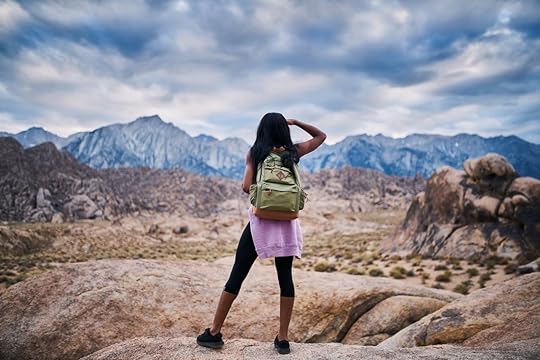
No matter the subject, 788 billion is a massive number. Put that number into US dollars and you have the total economic output of outdoor recreation in the United States — in 2019 alone. That’s according to the third annual report on the subject from the Bureau of Economic Analysis, which released its findings on November 10. The report’s biggest takeaway is this: The US spent a lot of time outside in 2019, and this had a major impact on economic growth.
Nationwide, outdoor recreation accounted for 2.1 percent of total economic output, the report found. But in areas that depend on outdoor recreation tourism, that number is even higher. Florida, Maine, Montana, and Wyoming each saw outdoor recreation drive more than four percent of their economic output. Western states including Idaho, Utah, and Colorado, where much of the state is open space protected by federal or state governments, saw that number at three percent or higher. The Colorado Sun’s reporting on the findings found that the outdoor recreation industry is now bigger than mining and bigger than agriculture.
What’s included in the report
The report puts outdoor recreation into three categories: conventional activities like boating, hiking, camping, and hunting; “other core activities” like gardening and outdoor events; and “supporting activities” such as lodging and dining. Also tabulated into the numbers were construction as it relates to supporting outdoor recreation.
Boating and related water-based recreation like fishing and water skiing accounted for the biggest share of economic output, at $23.6 billion. RVing was second, and in several mountainous states like Colorado, Vermont, and Utah, snow sports topped the charts.
What this means for travel and the economy
Across the United States and particularly in the west, outdoor recreation continues to drive economic growth in places formerly dependent on the extraction industry. Farmington, NM, is a prime example of this, as the city launched an initiative to rethink its economy to embrace its vast open spaces and public lands for the people to use, rather than solely for oil and gas development. The result has been the rekindling of a dying downtown and a flock of new arrivals to the city. Other towns including Fruita, CO, and Vernal, Utah, are experiencing the same thing.
Adding to this, under a new administration, the Bureau of Land Management can go back to protecting and optimizing our country’s public lands rather than prioritizing the interests of the extraction industry. This will help drive the economic output of the recreation industry higher and further the cause for conservation.
Additionally, growth in the outdoor sector is slowly becoming more inclusive thanks to BIPOC-led initiatives like the Outdoor CEO Diversity Pledge. This factor also plays into the increasing economic output of outdoor recreation, as previously marginalized communities continue to break down societal barriers to the outdoors. Recent Matador reporting highlights growing communities of BIPOC anglers and how Indigenous communities are bolstering identity in outdoor spaces that long belonged to them.
All of this adds up to broader economic growth fueled by a passion for exploring and preserving the outdoors rather than exploiting and extracting from it. Numbers from 2020 and the impact of the COVID-19 pandemic on the outdoor industry won’t be finalized until 2021, but national parks across the country are reporting record numbers as travelers seek socially distant means of exploration. And we know that our economy, and in particular small businesses that depend on travelers and outdoor recreation to survive, is going to need a big boost.
So get out there, because as Henry David Thoreau famously said in Walden, “We can never have enough of nature.” 
More like thisWinter SportsSmall independent ski areas are the place to ski this year
The post The US outdoor recreation economy is bigger than both mining and agriculture, according to report appeared first on Matador Network.

Rent ‘The Bachelor’ mansion Airbnb

Finding love during quarantine is nearly impossible, but if you’re craving a romantic atmosphere, staying in the mansion from the reality TV shows The Bachelor and The Bachelorette might fill that hole.
“The Mansion” is available for rent on Airbnb, but don’t expect a lineup of 30 hopeful singles knocking down your door.

Photo: Airbnb
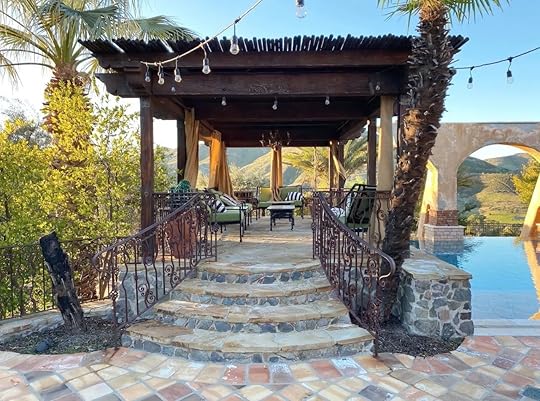
Photo: Airbnb
Villa de la Vina, the Mediterranean-style mansion where nearly every season of The Bachelor and The Bachelorette was filmed, is now available to rent on Airbnb for $6,000 per night. The property was built in 2004 and has 10,000 square feet of interior space (seven bedrooms and 8.5 bathrooms) and 20,000 feet of exterior space, with views of Malibu’s Santa Monica Mountains.
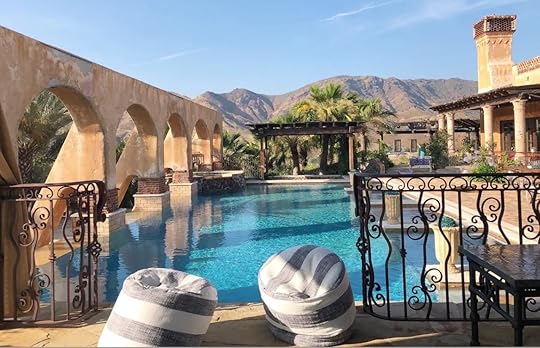
Photo: Airbnb

Photo: Airbnb
You’ll have full access to the patio furniture, jacuzzi, and pool — all of which you’ll recognize from the show. Keep in mind, however, that the listing says, “Absolutely no parties, filming, professional photography or gatherings. If this rule is not followed you will be shut down immediately and the police will be called for trespassing.”
Because of course, if you’re paying $6,000 to rent a mansion for you and your friends, why would you even think about throwing a party? 
More like thisWhere to Stay9 stunning yet affordable Airbnbs on Kauai, Hawaii
The post The mansion from ‘The Bachelor’ is on Airbnb for $6,000 a night appeared first on Matador Network.

Classic New England Thanksgiving

No region embodies the concept of Thanksgiving in the United States like New England does. Everything from the myth of the first Thanksgiving in Massachusetts to many of the traditional dishes on the table has a New England influence.
Amy Traverso, senior food editor of Yankee magazine and the host of the PBS series Weekends with Yankee, knows this well. Traverso lives in Massachusetts and grew up in New England. She’s lived in various parts of the US over the years and has embraced many of the Thanksgiving traditions across the country — fresh fruit from the farmers market the day before Thanksgiving in California, for example, and red chilis on the table in New Mexico.
New England, however, is home, and Traverso has gathered a wealth of knowledge about the region’s Thanksgiving history. Not to mention she’s helped shape the idea of a New England Thanksgiving herself through her work writing and editing stories about Thanksgiving culture, as well as creating recipes for Yankee.
We spoke with Traverso about the importance of Thanksgiving in New England and the dishes that best exemplify the region’s traditions.
This interview has been lightly edited for clarity and space.
What are your thoughts on how Thanksgiving is somewhat idolized in New England?
I grew up in Connecticut, and when you’re a kid and you see pictures of Thanksgiving — of the wholly invented notion of the first Thanksgiving and the popular idea of it, which isn’t really based in history.
But you see the landscape [of that notion of the first Thanksgiving] growing up in New England that looks very similar to the landscape I see out of my window. I think New Englanders do feel a sense of the history that happened here.
There was a harvest feast. It was different from what the story became, but there was a harvest feast that happened in Massachusetts.
And how does food play into that?
I’ve always been interested in talking with food historians about what would have been served in the original harvest feast, and you know, it’s quite different from what we eat today.
Certainly turkey would have been an option, along with probably venison. You would’ve seen corn and beans and squash. Not so much stuffing and pumpkin pie, but watercress and dried berries — those kinds of foods would have been abundant.
But I think the idealized classic Thanksgiving menu, which was an invention of the Victorian era, definitely holds a lot of sway [in New England]. People may feel like they need to have a certain set of dishes on the menu for it to feel like Thanksgiving.
That would be the mashed potatoes, the stuffing, the turkey, some form of pumpkin pie, and some form of cranberry sauce.
With such strong traditions regarding the dishes, is there room to play around with the classics?
As a recipe developer, I assume that when I do a menu for our November issue that readers might try one of the recipes — they’re probably not going to make the whole menu. In my experience, people will have that heirloom family recipe that gets made over and over again, but there’s always room for something new, and I think people enjoy a little bit of variety.
Knowing where we are in history and knowing that there’s a lot of scary changes happening right now and a lot of anxiety, I wanted to do a menu for the magazine this year that paid homage to iconic New England foods but put a fresh spin on them.
Those would include apple cider, molasses, cheddar cheese, pumpkin, and marshmallow fluff, which is kind of like a marshmallow mousse that’s very sweet and fluffy and marshmallowy. Growing up in New England, I ate peanut butter and fluff sandwiches, and they’re totally delicious.
So I came up with this menu where the turkey is brined with molasses and has a cider glaze, the stuffing is made with cornbread and brown bread — a classic New England bread that’s sweetened with molasses and made with corn, rye, and wheat flour. We did Brussels sprouts with maple glaze walnut and mashed potatoes with cheddar crisps, and then we did a pumpkin pie that has a layer of fluff so you have a fluff and cream cheese layer and then a pumpkin layer on top.
I’m sure there are people who serve a chowder or incorporate lobster into the meal. Or they might start out with oysters. Oysters would be the most common thing to start with as a light starter or hors d’oeuvres. There is also a tradition of oysters in the stuffing here.
New England is sometimes wrongly considered a monolith. Are there differences between the states or regions when it comes to Thanksgiving?
I think there are various regional differences that you can trace back to the history of the region. In Maine, which is still a major potato growing region, you certainly see mashed potatoes, but also potatoes worked into breads and stuffings. You also see a lot more seafood on your table if you’re in coastal Maine for Thanksgiving.
If you were going to go to Rhode Island, you might start with a clear chowder, whereas in Maine you have a creamy chowder.

Photo: AnastasiaKopa/Shutterstock
I think a lot of Thanksgiving is one meal and we are kind of sharing similar outlines. We might be vegan, or we might be Italian-American, or might be Somalian-American, and that’s where you’ll see a few of the side dishes that represent our specific cultural background.
New England food is heavily influenced by Portuguese food because there was such strong Portuguese fishing tradition here. Certainly a lot of Italian influence as well, and increasingly Puerto Rican and Jamaican flavors, and there’s a large Somali community in Maine.
So I see more and more of those flavors being folded into [the region’s] food in general, and certainly ingredients like Portuguese sausages show up in stuffing.
What about cranberry sauce or cranberry relish?
It really is a mix, because this is the home of Ocean Spray. I 100 percent grew up with Ocean Spray jellied cranberry sauce. On the other hand, my dad likes to make a simple sauce of cranberries cooked with sugar and orange juice and it’s yummy.
I think the classic jellied cranberry sauce is still pretty dominant. If you really feel strongly about making another side dish, then you would make your own cranberry sauce.
What other canned or prepared ingredients are classic to New England?
There’s a pumpkin brand that’s regional called One-Pie. It used to be made here, but the company was subsumed into a larger food company. It’s basically canned pumpkin and canned squash. [One-Pie was] bought by a company in Illinois, but the can is so cute it hasn’t changed since the ‘40s. I always seek it out — they still pack it under the One-Pie label, and that is the ingredient for your pumpkin pies unless you’re growing your own pumpkins and making your own pumpkin puree.
Bell’s Seasoning is another New England company that’s a very classic way to season your stuffing or your turkey. And that company is based in Massachusetts. Again, very cute vintage packaging with a turkey on the front. One of those childhood memory foods that a lot of people can relate to. 
More like thisFood + DrinkCranberry sauce vs. relish: a classic American Thanksgiving side dish debate
The post How New England shaped what the country eats on Thanksgiving appeared first on Matador Network.

New Circa hotel in Las Vegas

The first new casino built in downtown Las Vegas since 1980 just opened two weeks ago, and unsurprisingly, it’s a place full of superlatives.
Circa, which opened on October 28, is also Vegas’ first adults-only hotel and casino, and it’s home to the world’s largest sportsbook. Perhaps the most striking feature of the hotel, however, is Stadium Swim, a gigantic aquatheater that reimagined the traditional hotel pool into something much more dynamic.
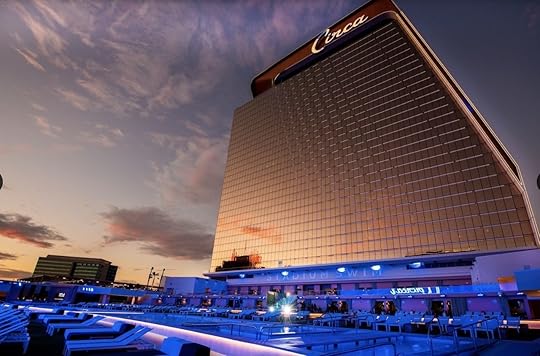
Photo: Circa Las Vegas
Stadium Swim has six pools, two spas, 15,000 square feet of pool space, and can hold 4,000 people. But the star of the show is the 143-foot by 40-foot LED screen at the entrance. The pool experience here is intended to mirror a sports stadium experience, but instead of uncomfortable seats, you’ll be lounging in a pool while watching the game.

Photo: Circa Las Vegas
Stadium Swim is a reflection of Circa owner Derek Stevens’ own love of sports and his desire to create an exciting, relaxing space for watching games. He told Matador Network, “We have all the games on, we’ll play the audio of featured games, and it’s very musically oriented. It’s a great place to come watch sports and have a few drinks. We’re excited about bringing it to Las Vegas.”
There are 30 cabanas for rent, 38 daybeds, 337 chaise lounges, and customers can order food directly to their seats from iPads. You can even reserve daybeds and cabanas in advance online.

Photo: Circa Las Vegas
And don’t worry about the “adult-only” thing. You just need to be 21 or older to enter the casino, mainly to avoid the hassle of carding customers multiple times.
According to Stevens, the age requirement saves customers from having to show their ID several times a night, making the whole customer experience more efficient. In most casinos, IDing customers at every table game, sportsbook, bar, and casino entrance slows down the process and “creates a cascading effect of subpar customer service.”
It also helps Circa keep a bit of an edge. “When someone has a cigar in their hand and a scotch,” Stevens said, “you just don’t want to see a stroller rolling over your toe. It’s kind of the wrong vibe.”
Circa is located in the heart of downtown’s Fremont Street Experience, next to the Golden Gate and across from the Plaza. Rooms at Circa start at $299 per night. 
More like thisTheme ParksThe 11 best roller coasters and thrill rides in Las Vegas
The post Circa is downtown Vegas’ first new hotel in 40 years, and it has an epic aquatheater appeared first on Matador Network.

Botswana is reopening to tourism
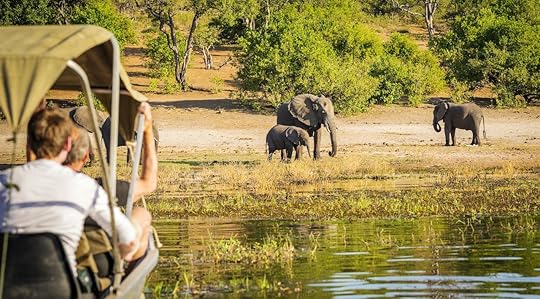
Like many other countries around the world, after being shuttered to tourism for several months, Botswana is reopening its borders in a phased manner.
On November 9, the government lifted restrictions on air travel at Sir Seretse Khama International Airport, Kasane International Airport, and Maun International Airport. On December 1, ground crossings will resume with South Africa, Namibia, and Zimbabwe, at the commercial border points of Kazungula road, Kazungula ferry, Ngoma, Ramokgwebaa, Martins Drift, Ramatlabama, Tlokweng, Mamuno, Pioneer, and Mohembo.
International air travel will also resume on December 1 at Phillip G. Matante International Airport in Francistown.
All incoming travelers to Botswana will be expected to present a negative COVID-19 PCR test taken within 72 hours of departure and must undergo screening for COVID-19 symptoms on arrival at the airport. Those who show symptoms of COVID-19 will be tested and may be required to quarantine for 14 days. All travelers are expected to remain in contact with local health authorities for 14 days and report any symptoms.
Wildlife-lovers will be pleased to hear the news, as Botswana has the world’s largest elephant population and some of the best safari experiences in Africa. 
More like thisSustainabilityFor local-owned African safaris, community and conservation come first
The post Botswana is reopening to international tourism on December 1 appeared first on Matador Network.

Best deserts in the US to visit
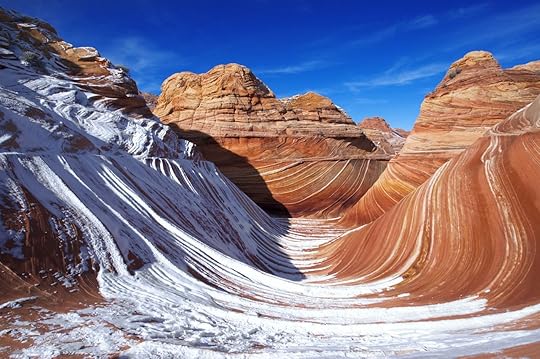
Mental images of the desert can evoke a lone cactus baking in the blistering heat of a high-noon sun. But deserts are a lot more complex than that, and many of them are found at higher altitudes that see sub-zero wintertime temperatures. In the absence of moisture in the air, even warm days can turn quickly to frigid nights once the sun dips below the horizon. Add in an overnight storm, and you may find yourself waking up to a desert landscape in a sparkling blanket of snowflakes. From California to Arizona, New Mexico and Idaho, these are the deserts that are even more beautiful once the snow falls.
1. Death Valley National Park, California
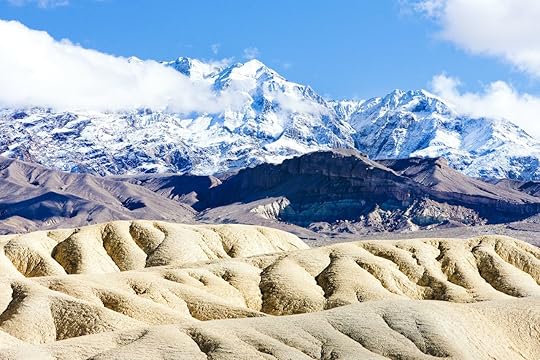
Photo: Richard Semik/Shutterstock
Given that Death Valley’s summertime temperatures are some of the highest on the planet, this has long been a national park to visit in the cooler months. And in winter, when the snow falls on the 11,000-foot-high Panamints, a mountain range at the northern end of the Mojave Desert within Death Valley, the scene is breathtaking. Work your way up from the valley floor, which is at 282 feet below sea level, to Zabriskie Point, one of the most famed locations in Death Valley National Park. From Zabriskie, with its undulating waves built from the sediment of a five-million-year-old lake, savor the juxtaposition of the arid, earth-toned valley floor and the snowy peaks behind it.
2. Joshua Tree National Park, California
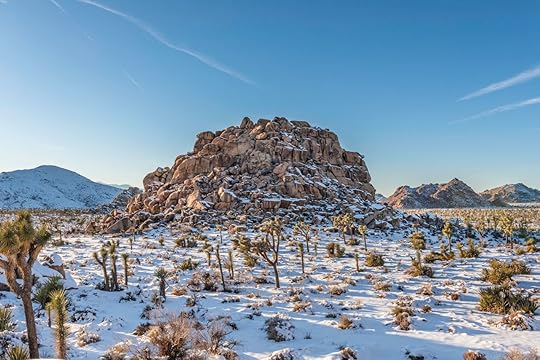
Photo: Digati Photography/Shutterstock
The highest elevations at Joshua Tree National Park top 5,500 feet above sea level. Add in ultra-dry air that doesn’t hold in the daytime warmth, and temperatures dip low enough on winter nights for it to snow — averaging an inch of snowfall annually. If you can time it right, it doesn’t get more magical than seeing freshly fallen flakes gracing the smoothly rounded boulders that seem straight out of The Flintstones and the Joshua trees, which are actually tall yucca palms that look like something from an alien planet.
3. Paria Canyon-Vermilion Cliffs Wilderness Area, Arizona

Photo: warnsweet/Shutterstock
The Coyote Buttes inside the Paria Canyon-Vermilion Cliffs Wilderness Area are spectacular at any time of year, but catching them with a layer of snow is like looking at a multi-layered cake with vanilla icing. The most famous place is “The Wave,” which is more like a gulley, and which requires advanced reservations to see up close. You can enter the lottery to do so here. But if you are lucky enough to see these different strata of sandstone, so colored due to iron-oxide deposits, sprinkled with winter white, it’ll be a memory to cherish forever. Throughout Paria Canyon, the brick red sandstone formations rival those of Bryce Canyon, but attract a lot fewer visitors.
4. Palm Springs, California
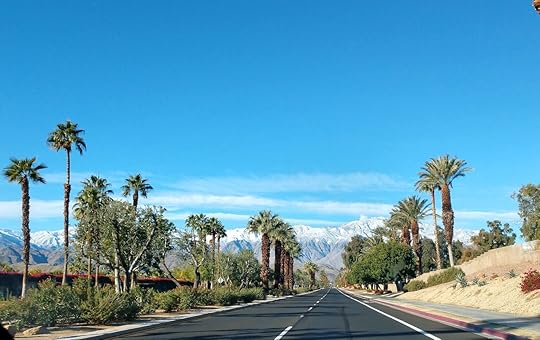
Photo: Luxury Fred Sherman/Shutterstock
Winter in the desert doesn’t always require snow on the ground to be striking. In Palm Springs, stroll through town and then look up to see the mountains of the San Jacinto Range, many of them surpassing 10,000 feet, decked in winter white — it feels almost incongruous. Even more inimitable is the experience of getting onto the Palm Springs Aerial Tramway in shorts and T-shirt weather and disembarking at 8,516 feet to a mountaintop covered in snow. You’d best have packed warm layers with good hiking boots, because the tram gives you access to over 50 miles of trails in the Mount San Jacinto Wilderness area. There aren’t too many places in the world where you can hike on snowy trails flanked by limber pine and lodgepole pine trees, and then take the tram back down to a palm-tree flanked hotel and sip a cocktail poolside.
5. Santa Fe, New Mexico
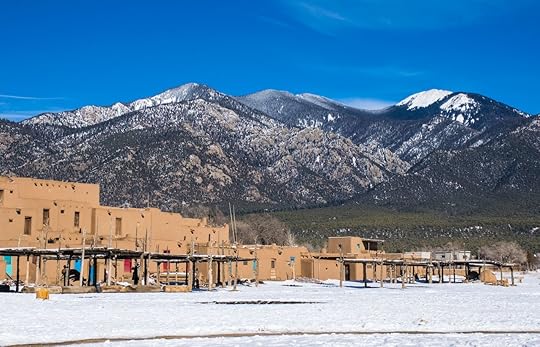
Photo: Roschetzky Photography/Shutterstock
New Mexico is one of our favorite winter road trip destinations, and Santa Fe is one reason why. Besides excellent food and drink, and a robust community of artists, Santa Fe is simply a beautiful place to be when the snow falls. The adobe buildings in front of the San Cristo mountains pop with a layer of snow. And since you are in Santa Fe, you can warm your cheeks around a cup of hot chocolate and some freshly made fry bread, served hot and drizzled with honey. After taking in the wintery scene in Santa Fe, you can spend a day skiing at the nearby Santa Fe Ski Resort or go a little farther to ski in Taos Ski Valley, stopping on the way at the picturesque town of the same name.
6. Big Bend, Texas
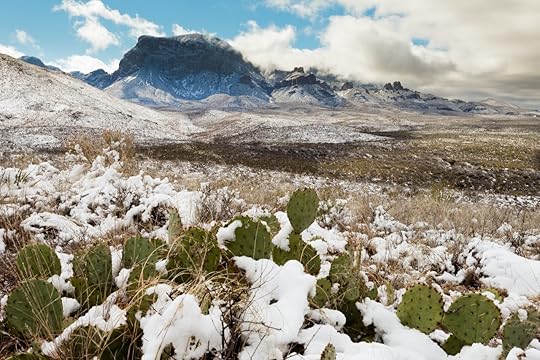
Photo: Pi-Lens/Shutterstock
The Chihuahuan Desert in Big Bend National Park receives very little rainfall, as storm systems are blocked by the mountain ranges that surround it. Yet it gets enough rain in the summer to support several native species of plants and animals, and a dusting of precipitation in winter that falls as snow in the higher latitudes. The leafy agave plants and prickly pear cactuses look so incongruous when they are covered in snow, but they lap up the moisture and store it to last during the dry months of spring.
7. Owyhee River Wilderness Area, Idaho
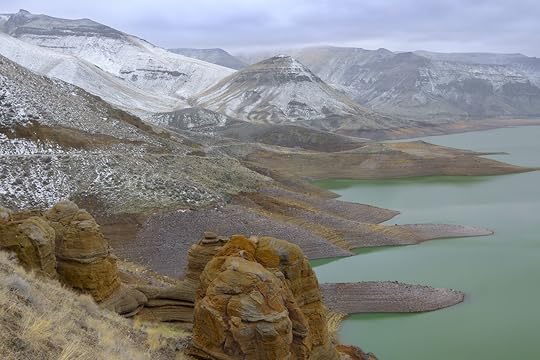
Photo: Wirestock Images/Shutterstock
Canyons criss-cross this high desert plateau that stretches across three states — from Oregon to Idaho to the northern reaches of Nevada. This Bureau of Land Management area is some of the most remote in the country, offering sightings of elk, mule deer, and bighorn sheep. Although summer is the time for river rafting and fishing, winter brings a snowy solitude that is hard to replicate in many places. Note that winter can see road closures and limited opportunities to visit, so if you do manage to see it with winter’s sparkling blanket, consider yourself fortunate. 
More like thisCampingThe best places to go camping in the desert in the US
The post The most beautiful American deserts to visit in winter for rocks, cactuses, and snow appeared first on Matador Network.

Cuba reopens Havana airport
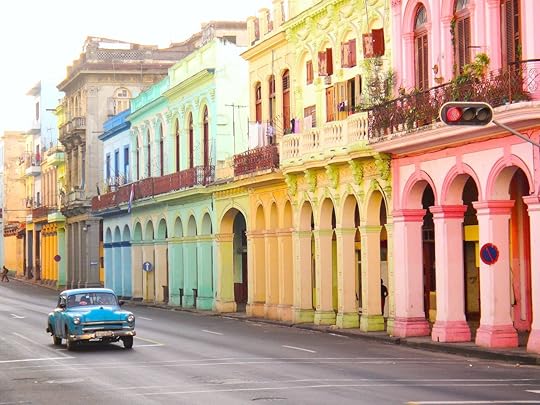
Cuba is jumpstarting its tourism season just in time for winter, reopening Havana Airport to commercial flights on Sunday.
November through March is typically the Caribbean’s high tourist season, though the pandemic has upended the usual tourism flow around the globe, and the island is likely to see far fewer visitors than previous years.
The tourism industry is one of the top earners in Cuba, and the sector’s closure since March has dealt the economy a severe blow.
Authorities will be testing all incoming passengers for COVID-19 upon arrival, charging a sanitary tariff to cover the costs of hygiene protocols. You don’t have to present evidence of a negative COVID-19 test before entering, but tourism agencies are encouraging visitors to monitor their health before traveling. 
More like thisTravel SafetyCan we trust negative COVID-19 tests as a green light for travel? We asked a travel doctor.
The post Cuba is reopening Havana Airport for international travel appeared first on Matador Network.

Pfizer COVID-19 vaccine news

In a dark nine months without travel, people are looking for any sign that they might be able to hit the road again soon. And a big sign happened earlier this week when Pfizer announced early results from its COVID-19 vaccine trial, which suggested that their vaccine is more than 90 percent effective.
This news allows us to imagine the end of the pandemic and the resumption of travel, and because people are starved for a decent vacation, holiday searches spiked as soon as it came out.
Skyscanner, a flight and accommodation booking platform, reported an instant spike in online traffic this week, up by 48 percent over the previous week.
CV Villas, which operates across Europe and the Caribbean, also saw an increase in searches, up by 76 percent over the previous Monday with bookings increasing by 40 percent.
According to The Guardian, CV Villas’ managing director Tristan Symondson said, “We are confident that news of a vaccine will have a huge positive effect on customers’ confidence to travel. Prices haven’t inflated hugely yet, but holidays are starting to sell fast.”
Airlines and hotels are also reporting a rise in online traffic. British Airways has seen increased interest in the Maldives, Canary Islands, the Caribbean, New York, Florida, and Dubai, while Club Med saw a 25 percent rise in traffic and booking inquiries compared to the previous week.
While travel prices for next spring and summer are currently rather cheap, those numbers are likely to increase as demand rises. Derek Moore, deputy chair of the Specialist Travel Association, told The Guardian, “There’s likely to be less choice and fewer flights available than pre-pandemic, which may force prices up.” 
More like thisWellnessThese are the travel vaccines you actually need, according to an expedition doctor
The post Pfizer’s vaccine news is causing a spike in vacation searches appeared first on Matador Network.

Botched statue restoration in Spain

Art restorations are intended to return artworks to their former glory without compromising the integrity of the piece. Unfortunately, some don’t quite go as planned.
A statue in Palencia, Spain, depicting a smiling woman set in the facade of a bank was originally unveiled in 1923. It recently underwent “restoration” that left it looking deformed.

Photo: Antonio Capel Artista/Facebook
Instead of a smiling woman, the statue has a seemingly melted face with two round cavities for eyes, a misshapen lump for a nose, and a surprised-looking mouth — a hideous appearance some have nicknamed to “potato head.”
Local artist Antonio Capel noticed the restoration at the end of last week and uploaded pictures to Facebook. His caption read, “It looks like a cartoon character.”
It’s still unclear who actually worked on the piece, but crowds have been gathering outside the bank to take pictures for the past few days.
Capel told CNN that he doesn’t know why nonprofessional restorers are allowed to work on projects like these. “I don’t understand why they allow it,” he said. “It doesn’t seem normal to me.”

Left: The original, from a copy of Bartolomé Esteban Murillo’s work. Right: The two restoration attempts by an amateur. (Photo: Cedida por Coleccionista/Europa Press 2020)
This botched restoration certainly isn’t the first of its kind in Spain. Back in January, a Virgin Mary painting — “The Immaculate Conception of Los Venerables” — was also the victim of an unprofessional restoration, resulting in Mary’s face looking more like Edvard Munch’s “The Scream.” 
More like thisNewsBotched art restoration results in a deformed Virgin Mary
The post Spanish statue nicknamed ‘potato head’ joins the club of botched art restorations appeared first on Matador Network.

November 11, 2020
4 luxe experiences in Los Cabos

At the southern tip of Baja California, where the waters of the Sea of Cortez and the Pacific Ocean meet, sits Los Cabos, views of teal and sand in all directions. When in such a beautiful place, one ought to have a beautiful place to stay. Synonymous with the very essence of luxury, Auberge Resorts Collection is the standard bearer here with two distinctly different yet equally decadent properties to choose from: Esperanza and Chileno Bay Resort & Residences.
Esperanza is the original, with offerings straight out of your vacation dreams — for starters, it’s the only private beach resort in Los Cabos. Palm-thatched roofs, meandering paths, and secluded villas overlook the mesmerizing crash of the surf below. Just up the road, Chileno Bay Resort and Residences is Auberge’s stylish sister, whose modern edges make for sleek, contemporary settings. It also sits on one of Cabo’s few swimmable beaches.
Two options, no wrong answer. The question becomes, which of the unparalleled experiences below do you want as part of your dream trip?
1. Hitting the H2O Cave at Chileno Bay
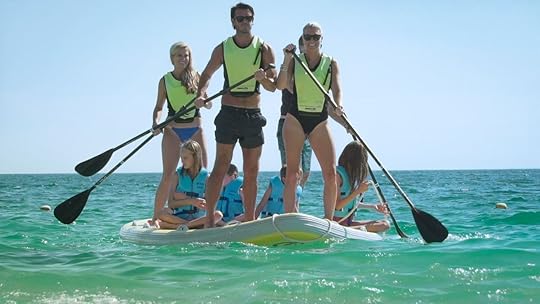
Photo: Matador Network
The resort’s three-tiered, zero-edge infinity pool makes you feel like you’re swimming along the ocean’s edge. You could stay here all day — all week — if you wanted.
But if you’re not here to simply feel like you’re in the ocean, that’s where the H2O Cave comes in. Head down to the shore, and the staff at this one-stop-shop activity center will hook you up with whatever gear you need to explore and enjoy the protected cove that envelops Chileno Bay’s rare swimmable beach. Snorkel, kayak, paddleboard, or even nab a stand-up pedalboard, the SUP world’s answer to an e-bike. If you don’t care how many jump on your bandwagon, opt for the giant six-foot-wide board for you and up to five of your friends.
Whatever activity suits your fancy, take a minute to stick your head in the water for a look-see. You’ll feel awestruck by the vibrant world just beneath — and to all sides of — your feet. Schools of fish are everywhere.
2. Going all out at Chileno Bay’s Brisa Del Mar Villa

Photo: Auberge Resorts Collection
As if the main resort accommodations weren’t posh enough, Chileno Bay’s Brisa Del Mar Villa provides guests of discernment their very own level of opulence. The six-bedroom villa comes decked out in the finest of furnishings, complete with elevator, full kitchen, 6.5 bathrooms, media room, outdoor bar, pool table, private pool, exclusive beach access, a rooftop terrace, wicked ocean views — and your very own personal butler.
In total, the villa is 24,000 square feet (that’s nearly half the size of the White House!). It’s the perfect option for friends, families, or other large groups who want the Cabo vacation of a lifetime.
3. Sea foraging with Esperanza’s Chef

Photo: Auberge Resorts Collection
Los Cabos’ Punta Ballena coastline looks like — and is named after — a whale tail. It’s here that you’ll catch Chef wandering the rocky beaches around Esperanza in search of sea urchins, blue stone crabs, and snails. Paying special attention to “del día” resources for all four of the resort’s restaurants, he’ll gladly take you along on a sea foraging excursion.
You’ll join Chef as he combs the area for delicacies, each ultimately playing a part in his famous chilpachole, a seafood feast cooked over an open fire right on the beach. A regional specialty, this Mexican fisherman’s stew comes with a bottle of wine — and more than a few memories to last a lifetime.
4. Spending the day in a palapa on Playa Paraíso, Esperanza’s private beach

Photo: Auberge Resorts Collection
Seclusion is nice, but what really seals this experience are Esperanza’s two-story, open-air palapas, cozied up on Cabo’s only exclusive beach, Playa Paraíso. Each palapa comes with the resort’s luxury thumbprint, spoiling you to the point that reentering reality is best done slowly.
If you choose the All-Day Paradise package, your morning starts with yoga or meditation, followed by five-star zen throughout the day — that is to say, private butler service and a fully stocked Yeti cooler. Breakfast and lunch, cocktail tastings, a ceviche class, a private chef-prepared BBQ dinner, and a 45-minute massage for two fill the hours, the evening wrapping up with a bonfire and s’mores. Note: You can revel in shorter samplings of bliss with the Morning Journey and Sunset Splendor packages.
Whichever experience — and, ultimately, whichever resort — you choose, local culture will be brought to you. Whether it’s turn-down service complete with artisan gifts or local dishes shared across generations, prepare for fond memories from the moment you arrive. Auberge makes Los Cabos unforgettable. 
The post 4 unforgettable experiences to have on your trip to Los Cabos, Mexico appeared first on Matador Network.

Matador Network's Blog
- Matador Network's profile
- 6 followers



